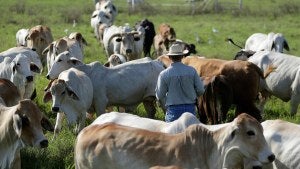Partnering with Youth to Inspire Agricultural Innovation
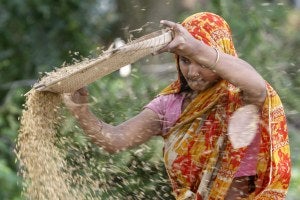 Play Podcast
Play Podcast
About the Episode
Farmers are facing a multitude of new challenges caused by climate change, from increasing weather variability to declining soil moisture. Through transitioning from varietal to hybrid seed, farmers are able to maximize their crop yields and enhance crop resilience, but there's a key actor who needs to be part of the conversation: young people. In this week's episode of Youth in Agriculture: Transforming Local Food Systems, Abdullah Al Maruf and Paul Schickler discuss how engaging young people in conversations on agricultural innovation is critical to ensuring long-term agricultural resilience and sustainability.
[Intro music.
Natalie Burdsall: INTRO: Hello and welcome to the limited podcast series “Youth in Agriculture: Transforming Local Food Systems,” produced by the Chicago Council on Global Affair’s Center on Global Food and Agriculture. Today, we will be listening in on a conversation between Abdullah Al Maruf, a young agriculture professional, and Paul Schickler, Owner of III Ag.]
Abdullah Al Maruf: Thank you for the opportunity. I’m Abdullah Al Maruf. I'm from the southern part of Bangladesh. So, probably you have heard of Bangladesh. It is currently the world’s largest delta and I'm currently studying in a master's in Genetics and Plant Breeding and also doing an internship with the World Food Forum at the headquarter of FAO in Rome. And during my whole academic year, I've been working with food, agriculture, and youth, and have led one of the largest youth associations which is the International Association of Students in Agriculture and Related Sciences and it's a great pleasure to have the conversation, have the opportunity to have this conversation with you.
Paul Schickler: And the university is?
Abdullah Al Maruf: The university is Patuakhali Science and Technology University.
Paul Schickler: Okay, very good.
Abdullah Al Maruf: It's in Bangladesh. It's not that much popular.
Paul Schickler: Okay, Abdullah, very good. Thanks for the introduction. I'll introduce myself. I’m Paul Schickler. I'm retired now, but still active in consulting and in some not-for-profit organizations. My career was unusual in that I was with one company for my entire career. So, I spent 42 years with what was first Pioneer Hybrid International. Then in 1999, we were acquired by DuPont, so we became DuPont Pioneer. And then more recently, about three years ago, Du Pont Pioneer merged with Dow AgroSciences and spun out as a publicly traded, standalone, agricultural company now called Corteva Agrisciences. And if you know anything about Du Pont Pioneer, or now Corteva, is dedicated to plant breeding around crops throughout the world, so very much involved directly in production agriculture.
I retired in 2017, but in that period since retirement, I work with seven agricultural companies, all in the startup arena, advancing new technologies in agriculture. And then I work with three not for profits, one of which is the Chicago Council on Global Affairs, and then the other two are Drake University and the World Food Prize Foundation. So, still active in a lot of areas of agriculture and also active in many ways through startup community as well as through an organization like the World Food Prize with youth, so the topic of today's conversation is in my area of interest.
So, Abdullah, I’ll start the questions and maybe first of all, being from Bangladesh, and with your interest in plant breeding and genetics, how did you get into that area of interest? How did you get originally interested in plant breeding?
Abdullah Al Maruf: Well, if I say, my original interest was not in plant breeding, so I explored a lot of fields. During my bachelor's, I worked as a research assistant in a project which was climate-smart agriculture, and then I did an internship with Patuakhali University’s water management. So, I pretty much explored a lot of fields. But later, when I got the option to choose for my master’s, I was thinking about more sustainable or more permanent solutions. Which is like, for example, climate change—we can control climate change—but if we develop a variety that is resilient to certain climatic variabilities or climatic disasters, then it's a permanent solution. So, pretty much with that idea of having a permanent solution, not for, not for long, but I think in future, we need more advanced technologies that is more related to plant breeding and genetics. For example, if we can control the gene, then we can definitely control the yield and all the other parameters from a from a crop, so. It's in our hands and how we would want the plant to be, we can do that. So, I think that's pretty much everything that makes me interested in that field. But I'm still taking myself as a multidisciplinary learner, I would say, so that I can link my knowledge, link my learning with different sectors and bring a good solution in the agricultural and food system transformation.
Paul Schickler: Right. Well, your area of interest is even directly involved in why I think youth have a very important place to play in agriculture. You know, certainly you talk about climate issues and improving agricultural productivity, but why I think there's a great opportunity for youth is because whatever discipline or interest an individual has, I think you could find that area of education, that discipline, that interest in agriculture. You know, in fact my background was in business administration and finance, and I found a very successful and very interesting career in agriculture. But if you go down the list, you know, whether it’s financial, business, administration, also legal, HR, marketing, logistics, IT, artificial intelligence or machine learning, molecular biology, etymology—you could name about any discipline across the spectrum and you could find a way in which to apply that discipline into agriculture and food production.
Abdullah Al Maruf: Yeah, based on, as far as I understand the food system, like, everything is linked, so from the supply chain to the production system. And it makes me interested to know that you have for your bachelor’s from business and then you moved to food and agricultural system, so as a youth it sparks my curiosity to, like, what makes you interested in food and agricultural system?
Paul Schickler: Well, if you compare agriculture to other industries, I don't think there's... it… it really is difficult for me to think of another industry where you can have the impact on the population, on the globe, on the environment, and on food security as you can in agriculture. It's an industry that, you know, in my words, serves a higher purpose. Because it does directly impact food production, it impacts nutrition, and it impacts the environment, and really there's not another industry that you can think of that touches people around the globe in that fashion. So, you know, clearly if you're trying to attract youth into this, not only are the disciplines broad that can be involved in agriculture, but the impact an individual can have on those very important issues of food security, nutrition, and environment I think are unmatched as compared to other industries.
Abdullah Al Maruf: That's really great. So, you mentioned about different sectors, but which sectors specifically, with your work and your location, is impacted in agriculture?
Paul Schickler: What? What sectors? What? Say that again, please.
Abdullah Al Maruf: Which sector, your specific impact you have throughout your career. Food security or something else?
Paul Schickler: What I originally started with was sort of a pathway on what my education had been. So, again, business administration and finance. So, my original beginning was in areas like accounting and budgeting in general administrative services that the corporation needed. But after a few years, I saw that there was tremendous opportunity outside of those disciplines of finance and accounting, and really took it upon myself to learn more about agriculture. So, this was sort of an on-the-job training within Pioneer to learn more about research, to learn more about production, to learn more about our sales system, and to learn more about international agricultural issues. So, I spent some time in each of those areas—research, production, sales, and international—that gave me that broad experience that I could then leverage the business and finance education that I had had, and then that allowed me to broaden my career within Pioneer. So, the first thing that I did after that broadening was to be responsible for the international operations of Pioneer. So that was everything outside of the United States.
So that gave me great exposure to not only research and production, but to the international opportunities throughout the world and the international challenges particularly, you know, in South Asia where you are from. I spent a lot of time in that geography and we advanced agriculture I think very, very significantly in areas like India, Pakistan, Indonesia, the Philippines, building our research organizations, building our production systems so that we could serve the specific needs of agriculture and farmers in those areas. And that's what we do around the world, that's what we did at Pioneer around the world, was understand what the challenges were, what the farmers' needs are, and then develop our business solutions to address those needs specifically to the geographies where the farmers lived and worked.
Abdullah Al Maruf: Well, that's very interesting. Like it also involves technological transfer to different sectoral farmers, or most importantly I would like to know for countries, like developing countries or least developed countries where farming is I think a crucial for to feed people, how do you think of transferring heavy machineries or digital technologies to a small holder to marginal farmers?
Paul Schickler: Right. Well, I can reflect back on some of the things that I saw as I worked internationally. You know, one thing that we would do if we would go into an underdeveloped country, you know, that could be Indonesia, it could be Kenya, it could be a country in Central America like Nicaragua, is the first thing is to learn from the local farmers, understand what their current practices are and what their current challenges are. And once we do that learning and understand what the challenges are, then we look at our organization and our technology and say, “Okay, do we have products, do we have services, do we have technology that can help farmers in those geographies?” And then what we would typically do is then find a farmer or a group of farmers to work with and then test our products, our services, our management practices with those farmers so that we could first see if they would work in that new environment. And then second, if they did work, then that farmer or those group of farmers could demonstrate that technology to the farmers around them, so that others could learn and then apply those same practices to themselves.
So, it doesn't necessarily need mechanization, because in many of those countries, farm size is small. So, still, there's still a lot of work being done by labor, by hand, by animals, but still, improved plant genetics and improved management practices on a small scale with labor can still improve the production, improve the livelihood, and if that occurs then the farmer cannot only make the necessary production for their own needs—for their own food needs, and for their own feed needs for their own livestock—but then they could begin to take the excess production and sell it on a larger, or, excuse me, sell it to local markets, and then begin to make investments in their own farm to improve it. That could be machinery. It could be additional labor. It could be chemical or biological products to improve the plant safety of their production. Or they could even begin to expand their operation so that they could utilize more of their production for sales in local markets and therefore, continue to improve their own livelihood.
Abdullah Al Maruf: That's, that's really interesting.
Paul Schickler: I'll give you one example—and I think you would appreciate this—in Bangladesh. One of the things that we demonstrated in South Asia in using advanced seeds—so we're introducing not only advanced rice varieties, but also rice hybrid seeds, and that's a big transition for local farmers. And so they're buying hybrid seed from Pioneer, which is more expensive than the varietal seed that they might have been using, or even the saved seed that they may have used, and so, you need to make sure that the production is used effectively so that you get the most, the highest return on that investment in hybrid seed production. So, one of the demonstrations that we would use in South Asia was to take a hula hoop. And we would take the hula hoop out into rice production fields, and we would lay that hula hoop down, and then we would say, I don't remember what the number is, but, “You need to put 20 hybrid seeds in that circle in order to effectively have the right plant population for maximizing your production.” So, there is, you know, an example, if you're using it very advanced technology, hybrid rice seed, but you're doing it with manual labor with a very simple tool to make sure that the farmer plants the right population and doesn't either overpopulate or under populate their seed production.
Abdullah Al Maruf: Well, that's really interesting. I have another question. I would say during my studies, I've been doing a little bit of research with hybrid seeds. So, one problem that particularly farmers face that is they have to buy the seed every year to get the same... as this is the only the F1 generation of the seed. So, in the next generation, the quality of the characters of seed changes, so they don't get the same yield from those seeds, so they need to buy more. But if they use the traditional seed program, which might not be high yielding but, in that case, they can use it for several years.
Paul Schickler: Right.
Abdullah Al Maruf: So, how do you think it's economically sufficient for farmers? And also, to add another perspective is that Bangladesh have a very disaster-prone country, and there are several disasters and natural calamities which also each year impacts the yield. For example, this year, a sudden flash flood could lose half of their yields. So, this might be a disadvantage when we are working with hybrid seed, in poor countries or developing countries.
Paul Schickler: Right. Well, I think there's a number of ways you can overcome that barrier to investing in hybrid seed as compared to saving varietal seed. Number one is, find a farmer and demonstrate to that farmer that the hybrid rice seed is a better yield outcome than the saved varietal seed. You can plant side-by-side trials demonstrating that the outcome, the yield, is better with the hybrid seed than with the varietal seed. Second, you can expand that from one farmer into a trial that goes across the entire village or the entire community, so that all the farmers see the benefit of that hybrid seed production. And if they see the benefit—the individual farmer or the community—they're going to start to see that they can improve their livelihood by generating not only the grain that's necessary for their own family and their own animals, but for more grain that they can sell in the local markets.
Another opportunity. Yes, it's going to be more expensive. So, you can work again with the local community or with even the government, local governments, or with a not-for-profit organization to put in place credit systems, so that the farmer can, if they don't have money to start—and most farmers don't—they can take on credit and use that credit to invest in seed, invest in fertilizer, invest in other inputs that will get them that greater yield. So, they get the greater yield, and at the end of the season, they take a portion of it for their own family and livestock needs. They take another portion of it and pay back the credit, the loan that they took out, and then whatever excess there is, then that is increased profit for their future investments in their own activities or to expand and improve their own operation. But there are many... there are many avenues to pursue credit. You know, Pioneer would provide credit directly to a farmer, but that only would provide them the credit for the seed. So, you really need, you know, a broader... either a financing system, a bank, a co-op, an NGO, or the government to come in and provide an overall credit scheme, so that all of the inputs—not just seed—but all the inputs can then be financed and then repaid when harvest occurs.
And then you mentioned the risk associated with farming. You know, whether it's pests, or you mentioned flooding or, you know, the opposite of flooding, drought. And clearly, you know, that's a risk that farmers take regardless of if they're planting varietal seed, safe seed, or hybrid seed. Farmers are risk-takers because we're always dealing with some kind of potential challenge. But the fact is that hybrid seed manages those risks better than safety or varietal seed because the hybrid seed has natural defenses in it to protect against the stress of crops, whether that is insect protection, whether that is disease protection, or drought, or water, you're probably better able to deal with those stresses through the use of hybrid seeds than through the use of safe seed. So, it's not simple. Not simple. It's a whole, comprehensive solution, but over time with the right amount of education and demonstration, and the right amount of supporting systems, I think you can make that conversion from lower-quality safety into hybrid seed production.
And, you know, I would give you the example that in the United States, in the 1920s, corn in the United States was basically produced just in the way that you mentioned. The farmer would save the grain from one year and make a selection of what the best grain was and then plant that grain as seed the next year. And it was only through individual farmer demonstrations and individual farmer demonstrating the management practices and then the supporting systems, like credit systems, that enabled the United States to move from varietal production of corn into the hybrid production of corn in about a ten-year period. It took about ten years to make that conversion from open-pollinated corn production to hybrid production. But at the same time, during that same period, you know, I can remember numbers. During that period, the United States averaged about 30 bushels per acre of corn production. And over that ten-year period, the average in the United States doubled to fifty, sixty, seventy bushels per acre then through the use of hybrid seed.
You know, which comes right back to the topic that we're talking about, and that is food security, and if you can go into, you know, whatever country or any community or any village and demonstrate that improved yield, improved food security will be the outcome if better practices are used, that's a tremendous advantage to not only that community, but to the global issues of food security. And that can be extended not only to address the food security issues, but also into environmental improvement as well.
So, I'm going to reverse this a bit and ask you a couple questions, okay, Abdullah? You got an interest in yourself getting involved in agriculture and in the science around agriculture. What do you think it's going to take to get some of your friends and the broader youth involved in agriculture and food production?
Abdullah Al Maruf: So, I would say the praise or people's interest in agriculture in my country, perspective, is not by natural. So, for example, the youth of the education system… our education system is more like a competition. You go for an exam, and then if you get a good rank, then you get to select. But I think this needs to be changed throughout the education system, also prioritizing—because our country’s population is rising at a rapid, rapid rate. So, we need more youth... not only youth, but we need more focus on the agricultural sector. And as we always say, youth is the future of our world. So, more youth involvement could be a way we can get more production, we can get more young farmers, we can get more scientists who are working with agriculture and not only engaging in youth, I would say also building the capacity of the youth because there are a lot of youth who is already involved in agriculture by choice or just by profession, because there’s a son of a farmer or a daughter of a farmer, basically from there are very young, from their boyhood, they're practicing the farming with their fathers. So, capacity building, I would say also a great factor here that will work to empower them, and in this case, our organization, for example, we are the largest youth association for agriculture and related sciences, so, we are currently in 57 countries, and we have more than 10,000 youth connected with us. We try to develop skills of youth through our different events, and through our different projects, and I would be happy to share one of the ways we engage students. Not only engage, we build a bridge between students and also the communities by what is called a village concept project. So, we have currently 51 or more than that village concept projects around the world.
So basically, what we do... we go to a community and try to find the problem as you have mentioned earlier, like what you did throughout your career. So, we go to a community and try to find the problem. So, it mostly is... it could be nutrition deficiency. So, if the children are not having proper nutrition, it could be a problem that the community is facing. So, to achieve food security, we also have to focus on nutrition security, so that they're getting a proper balanced diet. Here, students from nutrition and food science are students from agriculture who have a good background, who have a good insight, could be a way they can train those mothers, they can train those community people and give a better output in there. Also, in the agricultural sector, we also work with a good agricultural practices because there's also a part of sustainable agricultural food production.
This is the way we are involving youth, and I think capacity building is another factor that we not only ask, I think, as a whole, we have to focus on because more engagement will not necessarily will give a good result, but developing those human resources, developing those youth—capacity building—could be a good way to utilize the existing resources.
Paul Schickler: I think that's very positive on your part to be involved in youth organizations, because if you can work with a youth organization with the size of the organization that you're involved in—I think you said it's involving 10,000 youths working worldwide—if we can get youth organizations to grow and multiply and then get those youth organizations to work with others, like the Chicago Council on Global Affairs, or the World Food Prize, or universities throughout the world, or NGOs, if we can expand youth organizations and then get them connected with these other types of organizations, that's a way to really multiply the number of youth that are involved in food and agriculture, but also continue to get them motivated to do more and more.
And then there's one more thing that I think is important to include in that messaging to get more youth involved. You know, clearly, we've got a great opportunity to impact the world through improved food security and improved nutrition, but that needs to be combined with solutions for the climate issues that we face, and I think that if we can continue to demonstrate to the world, particularly youth, that some of the environmental challenges can be directly solved by improved agricultural practices, that's a great way to bring more youth into this industry.
Abdullah Al Maruf: Yep. And also, I would mention, like all the... all the NGOs, all the organizations working, like for example, the Third Agriculture organization that you belong to, or the Council’s Center on Food and Agriculture, we should... youth should be treated as equal partners. So, we are..., think I can probably list myself as the implementer of change because through our advocacy through different activities. It's not only me—there are a thousand youths worldwide doing their activities because of our... we have... we need a good future, and I would say if you combined, if you make a platform—a platform of youth—like for example, I can say 10 different youth organizations that are working worldwide with youth. But if you can take them in a place, in a bowl, all together, all the youth, then it's a huge impact. For example, youth from the forestry sector. These are also involved with agriculture, they have a different association; youth from agriculture sector, they have a different association; youth from agronomy, youth from genetics—different associations around the globe. So, these are the platforms, they’re already existing. And this platform can have another platform which we can combine together to have the power of youth. Like... it's yeah, one youth, one community that can serve a whole purpose of food security and together it could be a strong force that our future needed for good agricultural practices and our sustainable future.
Paul Schickler: Right. You said it very well that youth need an equal platform. Businesses, the government, universities, and NGOs are very strong and valuable organizations, but they don't know it all. And you know, I mentioned earlier that one of the things that Pioneer did as we expanded into developing countries is we went to the farmers, we went to the to the communities and learned from them to try and understand what they're doing and what their issues are and what their challenges are, and I think you're saying the same thing. We, we—businesses, government, universities, and NGOs—need to learn from the youth. So, if we can combine learning from the youth with learning from farmers, I think we've got a great opportunity to move forward together.
Natalie Burdsall: Thank you Abdullah and Paul for sharing your insights. Unfortunately, we are almost out of time, but do either of you have any final thoughts you would like to share?
Abdullah Al Maruf: I would say that one little sentence, that we can be troublemakers, the youth. So, if you don't treat us as an equal partner, we can... we have the courage to hold world leaders accountable for their actions because there are a lot of actions that is not going well, and we, the youth, have the power to hold leaders accountable. So, youth want to get that platform, youth want to get that opportunity to save our world.
Paul Schickler: Right. Well, I would echo that. I would use your voice to get that equal platform that you're describing, because I think the equal platform balances very, very well. Youth together with farmers, together with the infrastructure around the world. And by infrastructure, I mean businesses, government, NGO's and universities. If we listen to the farmers and listen to the youth, then I think we can make the type of improvements and advancements so that food security and environmental improvements are maintained.
Natalie Burdsall: Thank you again, Abdullah and Paul, for sharing your thoughts and providing more insight into the ways young people engage in global food and agriculture, and how they can steward sustainable change.
[Natalie Burdsall: OUTRO: And thank you for tuning in for this episode of “Youth in Agriculture: Transforming Local Food Systems.” As a reminder, the opinions you heard belong to the people who express them, and not the Chicago Council on Global Affairs. This episode is produced and edited by me, Natalie Burdsall. Thank you for listening—we’ll see you again next week.
Outro music.]








Other Episodes
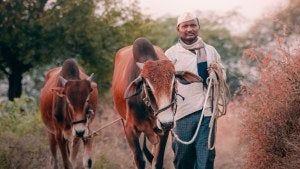 Food and Agriculture
Food and Agriculture
Existing barriers between rural and urban areas, and young and old farmers perpetuates an information divide in agriculture that a young cattle farmer is trying to reconcile.
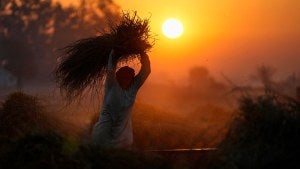 Food and Agriculture
Food and Agriculture
How do we nourish the population, while protecting the planet from the very act of nourishing us?
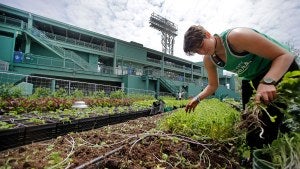 Food and Agriculture
Food and Agriculture
The Youth in Agriculture podcast examines new innovations required to improve the food system.
